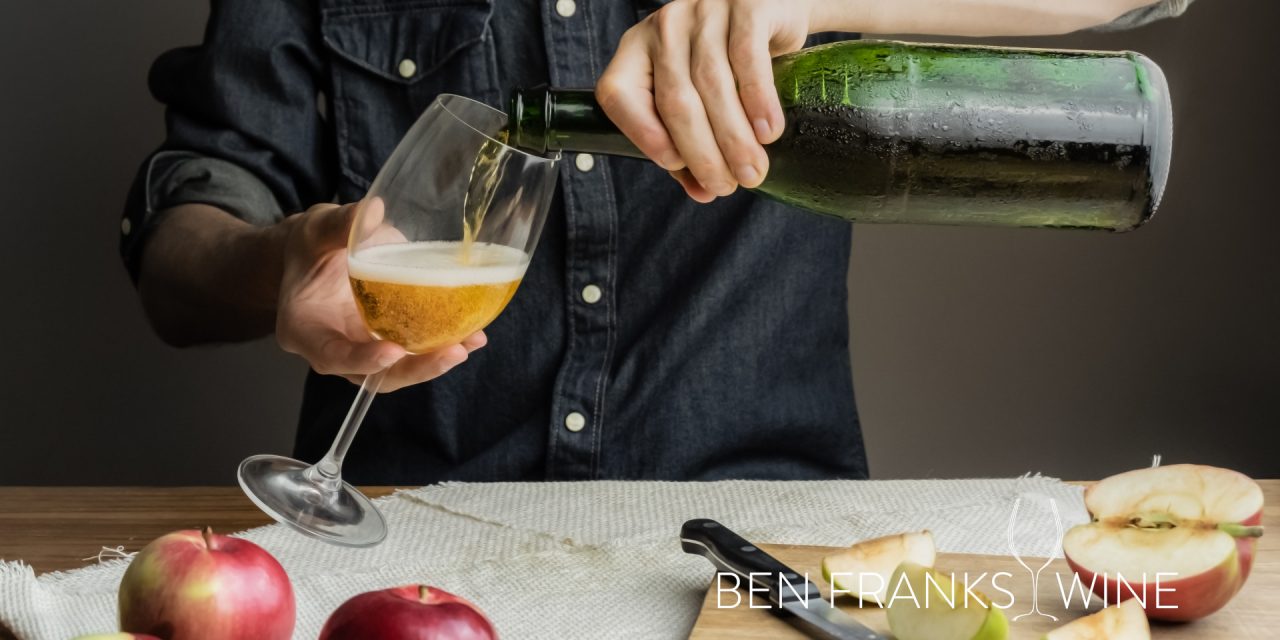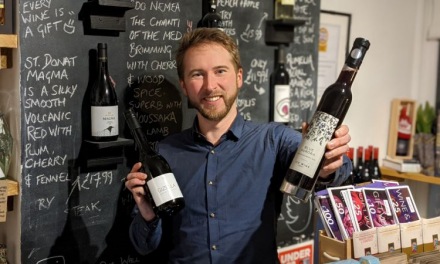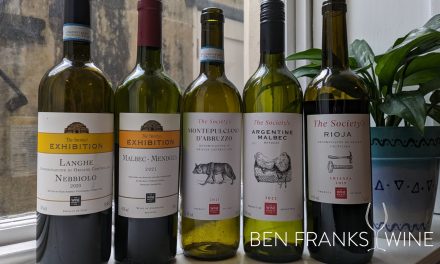In Alistair Morrell‘s debut article he tells his story, remembering the days when he wrote off cider to today becoming one of its biggest advocates. Alistair is the founder of Cider is Wine, a quality mark and marketing body promoting ciders made entirely from fruit.
The UK leads the world in cider consumption and production, constituting for 40% of the global totals. However, those statistics hide a ‘decade in decline’ according to the National Association of Cidermakers; what could change that dismal horizon?
Here’s a perspective offered by a key agent of change, who has the audacity to suggest that cider could be seen like wine!
Cider is Wine: A journey
I know most people will be shouting at their screen right now – cider is cider, not wine, but let me take a few moments of your time and open a potential new horizon of taste and experience, even a new business landscape for you, as it has for me. In spite of some considerable drinks knowledge and experience, this is a landscape and a whole new world that I never knew – or considered – might exist.

I should also declare up front that I’m totally biased as the Chief Cider Officer of Cider Is Wine but, having said that, I should also say that I’m not asking you take this journey yourself. This is one I have experienced personally, and so is a reflective, rather than a sales, account.
The Past
Wine has been my passion for over 35 years. I left school and started selling wine, travelled around the world doing various harvest jobs, and ended up becoming a buyer for two supermarkets. I’ve also worked for a number of suppliers and producers.
I’ve tasted the best, too – vertical tastings of Chateau Lafite Rothschild, tasting with the head of Penfolds winemaking, the Perrin family of Chateau de Beaucastel, and so many more. From France to New Zealand and back, through South & North America, I have bought and sold millions of bottles of wine.
The Revelation
There comes a point where, perhaps, whilst you wouldn’t say you think you know it all, you quite possibly do know as much as you can cram into one head, and so you think that it might be time for a change.
Such was that time, whilst studying during a career break, that I started (without too much thought) writing for a small cidery in the north of Sweden. The founder sent me some samples, which I viewed with a certain amount of trepidation. I hadn’t tasted cider for over 25 years, and it carried few happy gastronomic memories – as I’m sure many readers will empathise.
WOW, these samples were a revelation. Incredible flavours and tastes that were so, ahem, wine-like! How could that be? When I studied for my wine exams in the late 1980s we were taught that only one fruit can make ‘true’ wine – grapes. Confusion, even discombobulation, ensued.
There was only one thing for it – face the founder – Andreas. I reported – truly – that they tasted great, unbelievably so, but, seriously, I said they aren’t wine.
The Explanation
Fortunately Andreas, in a stereotypically Swedish way, calmly came back that perhaps they could – and should – be seen a different way. After all, their production takes apples, presses them, nothing is added, then they’re fermented and put into a beautiful package for sale. The input fruit may be different, but the process of converting into alcohol is the same as wine.
Well, put like that, they sounded like wines.
But what of terroir, ageing, varieties, styles – all the things that us ‘passionates’ get excited about? The things that create differences and uniqueness – they can’t be the same in cider – or can they?
The Law
I had to investigate further. I knew there exists an EU law for wine, namely: “a product obtained exclusively from the total or partial alcoholic fermentation of fresh grapes, whether or not crushed, or of grape must”.
Indeed, this has created the de facto global definition of wine, if nothing else than because the EU produces 60% of the world’s wine.
However there is no such EU law for cider, perry and fruit wine – and, although the UK is no longer in the EU, does this matter?
I would argue that standards really do matter, especially when it comes to food and drink. As consumers we want to be eating and drinking the ‘real deal’, the genuine (artisan) quality.
Yet, when it comes to cider, it’s more akin to the ‘Wild West’ with each country making up its own rules for what they call cider. In practice this means that a drink called ‘cider’ may be produced with no apple juice content, or up to 100% apple juice. Neither is this the whole story because that cider, whilst containing 100% juice, can come entirely from concentrate, which, rather shockingly, can mean that there is less than 1 apple’s worth of juice in a 75cl bottle!
Of course there’s nothing actually wrong with concentrate, per se, and it’s unlikely to do anyone any harm (notwithstanding the more than 50 permitted additives). However, in seeking authenticity or, in the vernacular, the ‘real deal’, concentrate nullifies any character, reducing the resultant cider to a homogenised taste and flavour profile.
Orange Juice
This is something we’re all to aware of from other products, for example fruit juices, where there’s a qualitative difference between ‘from concentrate’ and ‘freshly squeezed’. We also know that this quality definition makes a difference in taste and experience.
It’s something you can try for yourself. Line up, side by side, a cider made from concentrate and one made from 100% juice, using no concentrate.
The from concentrate maker typically tries to cover up the natural acidity and tannin in any one drink, whereas the maker of 100% juice, not from concentrate, is seeking something that reflects its ‘terroir’ (to use a winemaking term), what comes from the ground on which the apples have been grown. An altogether more involved and considered experience, to be appreciated and respected, if not revered.
The whole juice maker is all about representing all of those naturally occurring tannins and acidity which, together with the natural fruit, resonate around the nose and palate. Unlike the homogenised and anonymised mass market product, they change with age too, and are capable of developing into drinks of real grace and beauty.
Wine and Cider Makers
Many of the producers that we come across are both cider and wine makers and there’s a reason: the methods used to create alcohol remain are as they have been for centuries – brewing, fermenting and distilling. Only fermentation is naturally occurring, whereas brewing and distillation require heat sources. Apples, pears and other fruits can be fermented without any human intervention, and although not advisable for the quality of drinks that we demand today, it nonetheless signals this low intervention practice and a large part of the make-up of any resultant drink is already a done deal.
Food Matching with Cider
Wine pairs with food, so it’s worth considering these wines from apples, pears and other fruits with food, particularly as they have a much more assertive taste profile than grape wines.
Apples are generally more assertive than pears and, broadening the fruit used, more or less assertive again. Blueberries, for example, especially in the form of an ice wine are incredible, with the minty sense of the skin coming through on the nose and palate!
Generally each one of them has acidity, tannin and fruit palate, often more than grape wine, and often including some unfermentable fruit sugars. Taken together these items create a balance which is, more often than not, more assertive than their grape cousins. This is important when considering flavourful foods, such as South East Asian cuisines, where traditional grape wines seldom pair successfully.
The attached Food Matching Wheel will provide some fodder for the imagination and licence to explore.

How do you know what cider is the real deal?
With all of this is detailed understanding, which many a consumer, or even a trade expert, is unlikely to know, how do you recognise the real deal?
The be all and end all is that Cider Is Wine only works with producers of 100% juice not from concentrate, as defined by a detailed protocol. Producers must sign up if they want to use our holograms which they are then duty bound to affix to bottles. Alternatively they may incorporate the Cider Is Wine logo within their label design, providing that all important quality mark at the point of purchase or consumption.
But don’t just take our word for it. Oz Clarke OBE says: “So let’s get this straight. 1: I pick the fruit – grapes for wine, apples for cider; 2: I crush the fruit; 3: I ferment the juice – grape juice for wine, apple juice for cider. What’s the difference between wine and cider so far? Nothing! Flavour, yes. Philosophy, no. Pure, properly grown fruit transformed into a delicious alcoholic drink by the simplest methods available… real wine, real cider… cider is wine… well, put like that, it sounds like that.”
Cider is Wine
We have a compelling technical case to see alcoholic drinks fermented exclusively from the freshly gathered apples, pears and other fruits as wine. Some English dictionary definitions describes wine as “an alcoholic drink made from any fruit or flower”, and many in this country will lay testament to wines of various fruit and vegetables in times gone by.
However in the final analysis it is not the technical detail that these drinks should or shouldn’t be called wine; it is that they are made just once a year, by passionate people, and have an authentic production and finished taste that warrants our appreciation as much as any fine wine.
And that is all we ask!






